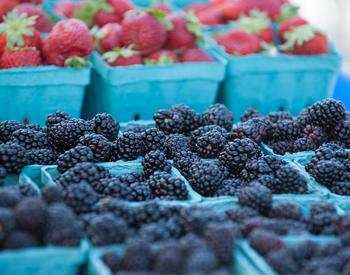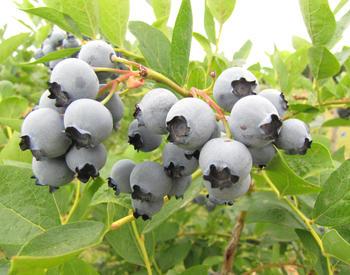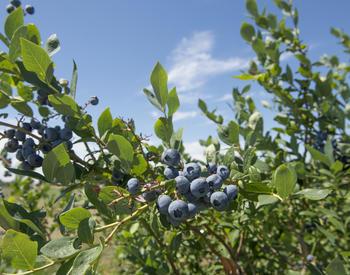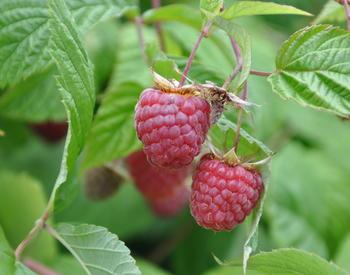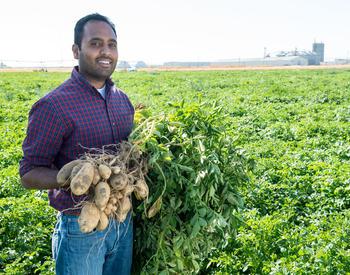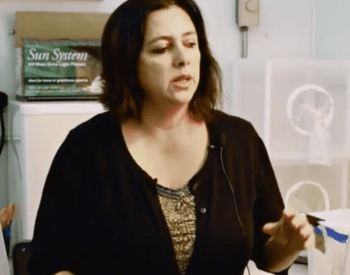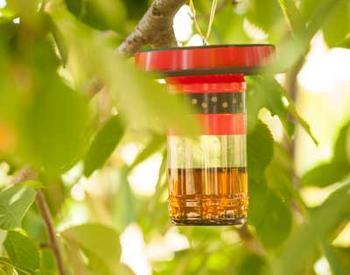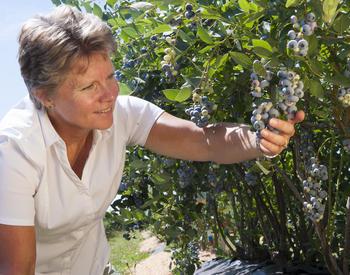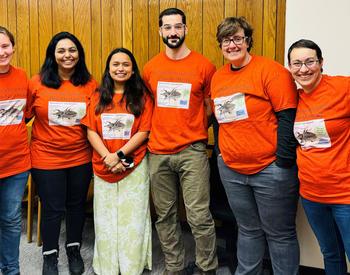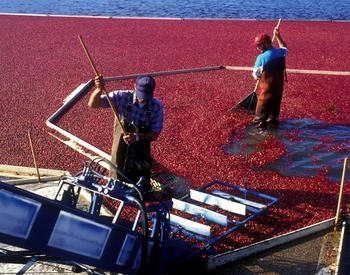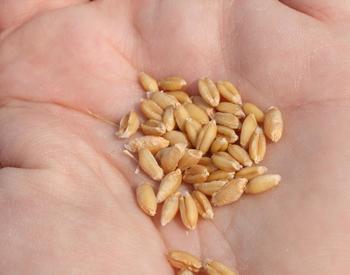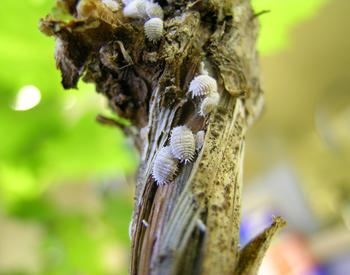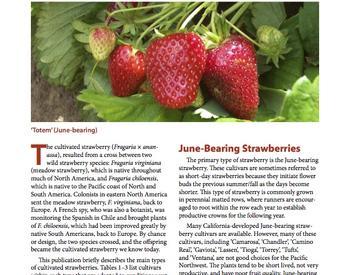AURORA, Ore. – Oregon berry growers heard pesticide updates, season extension techniques and the latest of breeding programs in the Northwest at the annual Strawberry Field Day hosted by Oregon State University Extension Service at the North Willamette Research and Extension Center.
Competition from California puts constraints on the Oregon strawberry industry, but small growers are carving out a niche for fresh, high-quality berries for local markets. While most Oregon small farms concentrate on fresh strawberries, large-scale operations grow mainly for processing into products – like Tillamook ice cream made from the iconic Oregon strawberry.
Pat Jones, OSU Extension senior faculty research assistant in berry crops, described the most recent breeding work being done through a collaboration with Extension and the U.S. Department of Agriculture’s Agriculture Research Service. The partnership that began 112 years ago has resulted in 15 strawberry varieties introduced since the partnership began 112 years ago, including the well-received Sweet Sunrise in 2013 and Marys Peak in 2016.
After USDA’s initial breeding – which consists of selecting two promising plants and crossing them by hand to see if the offspring have desired traits – the best of the best go to the OSU North Willamette Research and Extension Center, often referred to as NWREC, for evaluation. That takes at least two years and sometimes up to four. At any one time, up to 150 unique advanced selections are being evaluated. After NWREC, plants go to growers for farm-level evaluation.
Of course, flavor ranks as a top priority for new varieties. Plants also must be healthy but not so vigorous that nutrients are diverted from berry to foliage and the berry is hidden in the interior of the plant. Size, firmness, disease resistance, color and ease of harvesting also come into play.
“We want to get the most information on how the plant performs,” said Scott Lukas, who leads the OSU Extension research berry program and holds the endowed professorship for Northwest Berry Production and Management in the OSU College of Agricultural Sciences. “Then we look at berry quality. Are they too small? We don’t want those. Are they sweet? Is the color dark but not too dark? There is a lot of aspects that go into a decision to release a new variety.”
Currently, two promising varieties are going through evaluation and may be released in the next few years. Not named yet, they are referred to as 2678-1 and 3009-1.
“We like these a lot,” Jones said. “The first one is later season than traditional Oregon berries and has the high-quality flavor that is what the Northwest is known for. The second one is mid-season, has a real nice, deep rich color and, again, the high-quality flavor.”
